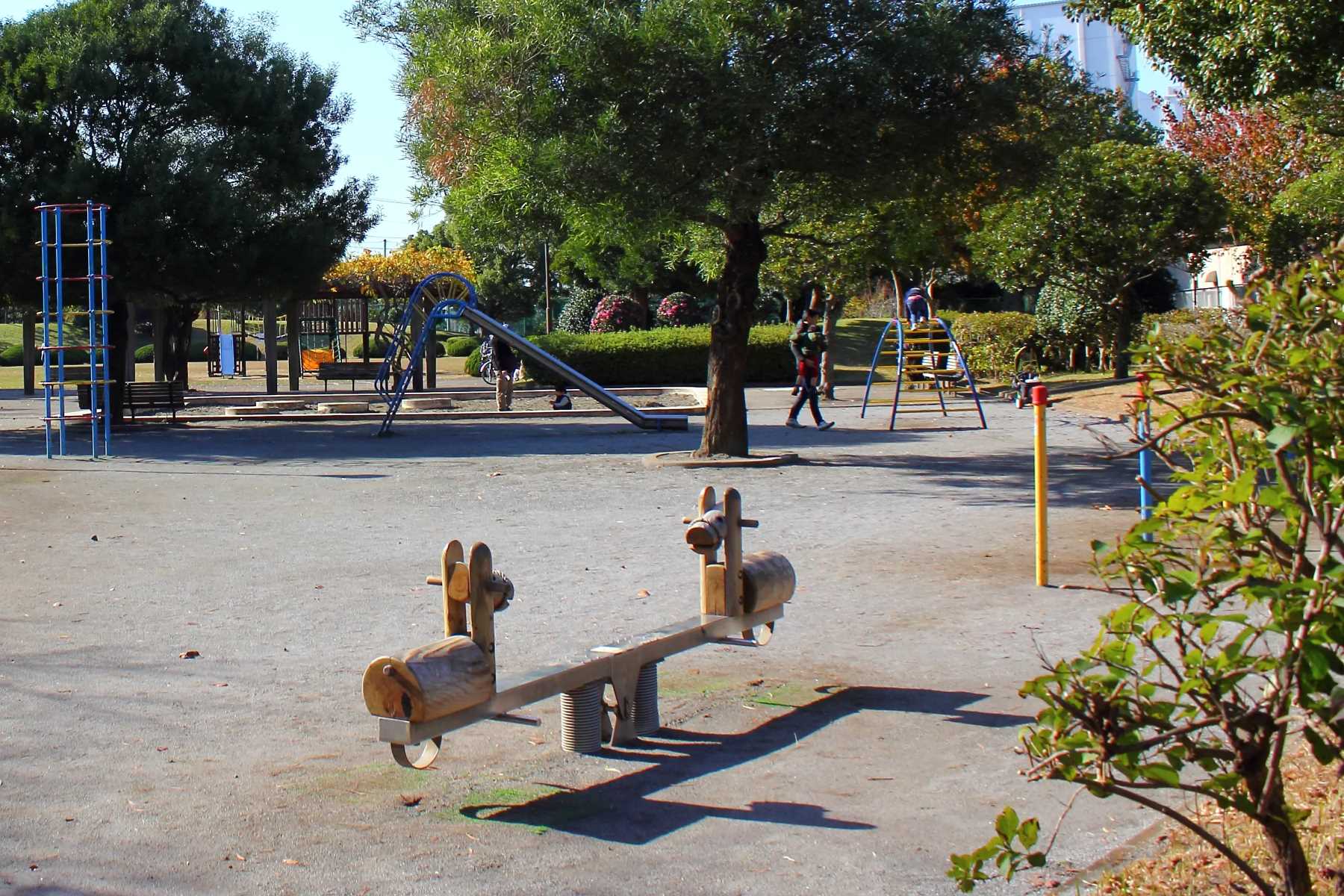Home>Science>The Surprising Truth About Seesaws – Are They Really First Class Levers?


Science
The Surprising Truth About Seesaws – Are They Really First Class Levers?
Published: January 24, 2024
Discover the surprising science behind seesaws and whether they truly function as first-class levers. Uncover the truth about seesaws and their connection to physics.
(Many of the links in this article redirect to a specific reviewed product. Your purchase of these products through affiliate links helps to generate commission for Regretless.com, at no extra cost. Learn more)
Table of Contents
Introduction
Seesaws, the timeless playground staple, have delighted children for generations. The simple yet captivating contraption consists of a long plank balanced on a central fulcrum, allowing two individuals to take turns propelling each other up and down. While seesaws are synonymous with carefree fun, they also offer a fascinating insight into the principles of physics and mechanics.
In this article, we will delve into the captivating world of seesaws, exploring the surprising truth behind their operation and shedding light on the age-old question: Are seesaws really first-class levers? By unraveling the history, mechanics, and scientific principles governing these beloved playground fixtures, we aim to provide a comprehensive understanding of their inner workings and the fundamental physics at play.
Join us on this enlightening journey as we uncover the captivating history of seesaws, gain insights into the mechanics of first-class levers, and conduct experiments to unravel the mysteries of seesaw operation. Prepare to be amazed by the intricate interplay of forces and principles that make seesaws a timeless source of joy and wonder for children and adults alike.
The History of Seesaws
Seesaws, also known as teeter-totters, have a rich and storied history that spans centuries. The origins of these iconic play structures can be traced back to ancient civilizations, where rudimentary forms of seesaws provided entertainment and amusement for children. The concept of a balanced plank serving as a seesaw likely emerged from the simple yet ingenious observation of a fallen tree branch teetering on a rock or log, inspiring the creation of a playful apparatus that mimicked this natural phenomenon.
Historical records suggest that seesaws were enjoyed by children in various cultures across the globe. In ancient Greece, archaeologists have unearthed evidence of seesaw-like devices dating back to the 5th century BC, indicating that the concept of reciprocal motion and balance has captivated young minds for millennia.
The seesaw's enduring appeal persisted through the ages, with depictions of similar contraptions appearing in medieval European art and literature. As societies evolved and embraced the concept of structured play and recreation, seesaws became a ubiquitous feature in playgrounds and recreational spaces, providing children with a simple yet exhilarating way to experience the thrill of controlled motion and interaction.
Fast forward to modern times, and seesaws continue to hold a cherished place in the hearts of children and adults worldwide. Their timeless allure and universal appeal have transcended cultural and generational boundaries, making them a symbol of innocent joy and camaraderie.
While the basic design of seesaws has remained consistent over the years, contemporary advancements in materials and safety standards have enhanced their durability and reliability, ensuring that future generations can partake in the time-honored tradition of seesaw play.
As we reflect on the rich history of seesaws, it becomes evident that these humble yet enchanting contraptions have left an indelible mark on the collective memories of countless individuals, serving as a testament to the enduring power of simple, unadulterated fun.
The evolution of seesaws mirrors the timeless essence of childhood itself, reminding us that the most cherished moments often stem from the purest and most uncomplicated sources of delight.
Understanding First Class Levers
First-class levers are fundamental components of physics and mechanics, serving as essential building blocks in understanding the principles of motion and force. These versatile mechanisms play a pivotal role in a myriad of everyday devices and tools, from crowbars and scissors to seesaws. To comprehend the inner workings of seesaws, it is crucial to grasp the mechanics of first-class levers and their influence on the operation of these iconic play structures.
At the heart of every first-class lever lies a simple yet profound concept: the arrangement of a rigid beam or plank, a fulcrum, and the application of force at two distinct points. In this configuration, the fulcrum serves as the pivotal point around which the lever rotates, creating a dynamic interplay of forces that enables controlled motion and mechanical advantage.
The defining characteristic of first-class levers is the positioning of the fulcrum between the applied force and the load or resistance. This strategic arrangement allows for a diverse range of applications, where the input force can be amplified to overcome resistance or achieve precise movements. By manipulating the relative distances between the fulcrum, force, and load, engineers and innovators have harnessed the potential of first-class levers to drive technological advancements and enhance mechanical efficiency.
In the context of seesaws, the application of first-class lever principles becomes readily apparent. The long plank of the seesaw acts as the lever, with the central fulcrum facilitating the reciprocal motion of the riders. As one individual exerts downward force on their end of the plank, the fulcrum enables the transfer of this force to the opposing end, propelling the other rider upwards. This seamless exchange of forces embodies the essence of a first-class lever in action, showcasing the elegant simplicity and effectiveness of this foundational mechanical concept.
By understanding the principles of first-class levers, we gain valuable insights into the underlying mechanics of seesaws and the intricate dynamics that govern their operation. The fusion of physics and playfulness becomes evident as we unravel the symbiotic relationship between scientific principles and childhood amusement, highlighting the pervasive influence of fundamental concepts in shaping our everyday experiences.
As we delve deeper into the realm of first-class levers, we embark on a journey of discovery, where the convergence of theory and practical application unlocks a world of possibilities and illuminates the interconnectedness of scientific principles with the marvels of everyday life.
The Mechanics of Seesaws
The mechanics of seesaws encapsulate a captivating interplay of forces, motion, and equilibrium, offering a compelling demonstration of fundamental physical principles in action. At the core of a seesaw's mechanics lies the concept of a first-class lever, where a long plank, serving as the lever, pivots around a central fulcrum, enabling reciprocal motion as individuals exert force at opposing ends.
The pivotal element of a seesaw is the fulcrum, strategically positioned to facilitate the dynamic exchange of forces between the riders. As one individual applies downward force on their end of the plank, the seesaw's mechanics come into play, translating this force into upward motion for the opposing rider. This seamless transfer of energy embodies the elegance of first-class lever mechanics, showcasing the efficient conversion of input force into controlled motion.
The equilibrium of a seesaw is a testament to the delicate balance of forces at play. When both riders are of equal weight and exert equal force, the seesaw remains level, symbolizing a state of equilibrium where the moments of force on either side of the fulcrum are balanced. This equilibrium reflects the symmetrical distribution of forces, creating a harmonious interplay that allows for fluid, oscillatory motion.
The mechanics of seesaws also highlight the concept of mechanical advantage, where the positioning of the fulcrum influences the leverage and effectiveness of applied force. By adjusting their positions along the plank, riders can manipulate the seesaw's mechanics to experience varying degrees of mechanical advantage, enabling them to control the amplitude and velocity of their oscillations.
Furthermore, the mechanics of seesaws underscore the principles of rotational motion, as the lever's pivot point facilitates rotational movement, transforming linear force into angular displacement. This transformative process embodies the essence of mechanical principles in action, showcasing the seamless conversion of input force into dynamic, oscillatory motion.
In essence, the mechanics of seesaws offer a captivating window into the intricate dynamics of first-class levers, equilibrium, mechanical advantage, and rotational motion. By unraveling the underlying principles governing seesaw operation, we gain a profound appreciation for the fusion of scientific concepts with the joyous realm of childhood play, underscoring the pervasive influence of physics and mechanics in shaping our everyday experiences.
Experimenting with Seesaws
Embarking on a journey of scientific exploration, we delve into the realm of experimental inquiry to unravel the captivating dynamics of seesaws. Through hands-on experimentation, we seek to elucidate the intricate interplay of forces, motion, and equilibrium that define the operation of these beloved playground fixtures.
Our experimental foray commences with the meticulous selection of seesaw participants, each embodying a unique combination of mass and force application. By varying the weights and exerted forces of the participants, we aim to observe the consequential effects on the seesaw's oscillatory motion and equilibrium.
As the experimental trials unfold, we meticulously document the interplay of forces at play, meticulously recording the amplitude, velocity, and duration of each oscillation. By capturing these empirical observations, we endeavor to discern patterns and correlations that shed light on the fundamental principles governing seesaw mechanics.
Furthermore, we introduce the concept of mechanical advantage into our experimental framework, allowing participants to strategically position themselves along the seesaw plank to explore the nuanced variations in leverage and force transmission. Through these deliberate manipulations, we aim to elucidate the influence of fulcrum positioning on the seesaw's mechanical advantage and the resultant impact on riders' experiences.
In our experimental pursuits, we also delve into the realm of equilibrium, carefully orchestrating scenarios where participants of varying weights endeavor to achieve a balanced seesaw position. By meticulously adjusting the distribution of mass and force, we seek to unveil the delicate equilibrium conditions that underpin the seesaw's harmonious motion, offering a firsthand glimpse into the symmetrical interplay of forces and the resulting state of balance.
As our experimental odyssey unfolds, we are captivated by the intricate nuances and revelations that emerge from our scientific inquiry. The empirical data and firsthand observations yield a profound understanding of the seesaw's mechanics, highlighting the seamless fusion of scientific principles with the joyous realm of childhood play.
Through our experimental endeavors, we celebrate the inquisitive spirit of scientific inquiry and the transformative power of hands-on exploration, reaffirming the timeless allure and educational potential of seesaws as captivating conduits for scientific discovery and experiential learning.
Conclusion
In conclusion, our exploration of seesaws has unveiled a captivating tapestry of history, mechanics, and scientific inquiry, offering a profound appreciation for the enduring allure and educational potential of these beloved playground fixtures. From the rich historical tapestry that spans ancient civilizations to the modern-day playgrounds, seesaws have left an indelible mark on the collective memories of countless individuals, serving as a testament to the enduring power of simple, unadulterated fun.
Delving into the mechanics of first-class levers has provided valuable insights into the underlying principles governing seesaw operation. The seamless interplay of forces, equilibrium, and mechanical advantage has underscored the elegant fusion of physics and playfulness, highlighting the pervasive influence of fundamental concepts in shaping our everyday experiences. By unraveling the intricate dynamics of seesaw mechanics, we have gained a profound understanding of the seesaw's operation as a captivating embodiment of scientific principles in action.
Our hands-on experimentation has further enriched our understanding, offering a firsthand glimpse into the interplay of forces, motion, and equilibrium that define the seesaw experience. Through meticulous observation and empirical inquiry, we have discerned the nuanced variations in seesaw dynamics, shedding light on the transformative power of hands-on exploration and experiential learning. The experimental trials have reaffirmed the timeless allure and educational potential of seesaws as captivating conduits for scientific discovery and inquiry.
As we reflect on our journey through the captivating world of seesaws, it becomes evident that these humble yet enchanting contraptions offer far more than mere amusement. They serve as gateways to scientific exploration, embodying the seamless fusion of theory and practical application. The seesaw, with its timeless appeal and intrinsic educational value, stands as a testament to the enduring synergy between scientific principles and the marvels of everyday life.
In essence, our exploration of seesaws has transcended the realms of history, mechanics, and experimentation, culminating in a profound appreciation for the enduring significance of these iconic play structures. As we embrace the joyous spirit of childhood play and the transformative power of scientific inquiry, we are reminded that the most profound discoveries often stem from the simplest and most unassuming sources. Seesaws, with their timeless allure and educational potential, stand as a testament to the enduring synergy between scientific principles and the marvels of everyday life.














